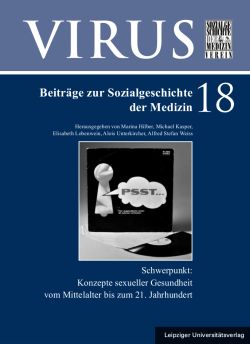
VIRUS Band 18, pp. 061-080, 2020/07/09
Konzepte sexueller Gesundheit vom Mittelalter bis zum 21. Jahrhundert

Scientific research on aphrodisiacs is hampered due to the lack of specific written sources. Often there are only few indications that hardly allow conclusions regarding everyday life. This complexity of the issue already starts with the definition of aphrodisiacs, as the term covers the whole range from essential remedies to luxury items increasing sexual performance. The use and the social prestige of aphrodisiacs in the Early Modern Period depended on gender and social background. Because of the large number of plant, animal and chemical substances, which were regarded as helpful to increase potency or libido, it may be assumed that the issue was indeed important and significant. Smooth transitions and grey areas were also typical for the aphrodisiacs themselves: Often it was only a small step from love and passion to magic, witchcraft, crime, and murder.
Keywords: Aphrodisiac, Early Modern Age, Impotence, Lust, Sexual History, Habsburg Empire